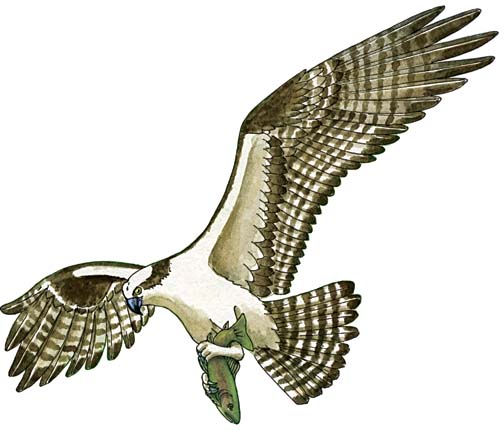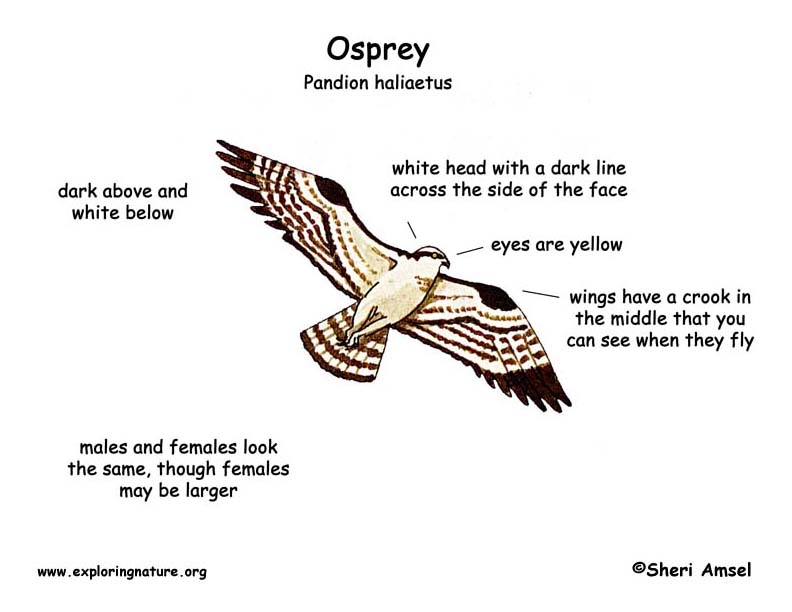

They spend the winter in the southern U.S. to South America. They are also in Africa, India, Southeast Asia, and Australia. They breed in Alaska, across Canada, south along the coasts to Mexico and the Caribbean. They also breed in Eurasia, Middle East, Australia, and Indonesia.
They are found along rivers, ponds and lakes.
Osprey are dark above and white below. They have a white head with a dark line across the side of the face. Their wings have a crook in the middle that you can see when they fly overhead. Their eyes are yellow. Males and females look the same, though females may be larger.
They dive for fish, catching them in their feet (talons). Sometimes they dive completely under water to catch fish.
They eat fish.
They build a large nest of sticks, lined with grass. The female lays 1- 4 white to pink eggs with dark spots.
Kingdom: Animalia
Phylum: Chordata
Subphylum: Vetebrata
Class: Aves
Order: Accipitriformes
Family: Pandionidae
Genus: Pandion
Species: P. haliaetus
When you research information you must cite the reference. Citing for websites is different from citing from books, magazines and periodicals. The style of citing shown here is from the MLA Style Citations (Modern Language Association).
When citing a WEBSITE the general format is as follows.
Author Last Name, First Name(s). "Title: Subtitle of Part of Web Page, if appropriate." Title: Subtitle: Section of Page if appropriate. Sponsoring/Publishing Agency, If Given. Additional significant descriptive information. Date of Electronic Publication or other Date, such as Last Updated. Day Month Year of access < URL >.
Amsel, Sheri. "Osprey" Exploring Nature Educational Resource ©2005-2024. December 14, 2024
< http://www.exploringnature.org/db/view/Osprey >

